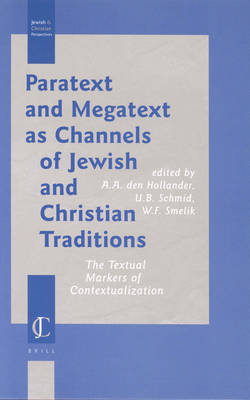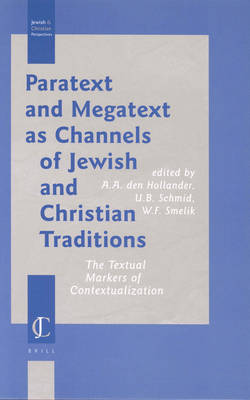
- Afhalen na 1 uur in een winkel met voorraad
- Gratis thuislevering in België vanaf € 30
- Ruim aanbod met 7 miljoen producten
- Afhalen na 1 uur in een winkel met voorraad
- Gratis thuislevering in België vanaf € 30
- Ruim aanbod met 7 miljoen producten
Zoeken
Paratext and Megatext as Channels of Jewish and Christian Traditions
The Textual Markers of Contextualization
€ 257,95
+ 515 punten
Omschrijving
Religious traditions are channeled to new audiences by textual markers, which inform their understanding and influence. Such markers are signs of contextualisation which belong to the paratext of a tradition: textual elements that do not belong to the core text itself but belong to their embedding and as such affect their reception. Alternatively, some texts function purposely in tandem with another text, and cannot be understood without that text. While the second text informs the way the first one is being understood, it can hardly function independently.
The discussions include the arrangement of textual blocks in the Hebrew Bible; how the oral transmission of Jewish Aramaic Bible translations had to be recited as a counterpoint to the Hebrew chant; how synagogue poetry presupposes the channels of liturgical instruction; how the Talmud can be perceived as a translation of Mishnah; how the presence of paratextual elements such as annotations and prefaces influenced the Index Librorum Prohibitorum concerning 16th century Bibles; the function of paratext and scope for modern Bible translations.
This volume will tentatively explore the wide range of paratext and megatext as devices of channeling religious traditions.
The discussions include the arrangement of textual blocks in the Hebrew Bible; how the oral transmission of Jewish Aramaic Bible translations had to be recited as a counterpoint to the Hebrew chant; how synagogue poetry presupposes the channels of liturgical instruction; how the Talmud can be perceived as a translation of Mishnah; how the presence of paratextual elements such as annotations and prefaces influenced the Index Librorum Prohibitorum concerning 16th century Bibles; the function of paratext and scope for modern Bible translations.
This volume will tentatively explore the wide range of paratext and megatext as devices of channeling religious traditions.
Specificaties
Betrokkenen
- Uitgeverij:
Inhoud
- Aantal bladzijden:
- 220
- Taal:
- Engels
- Reeks:
- Reeksnummer:
- nr. 6
Eigenschappen
- Productcode (EAN):
- 9789004128828
- Verschijningsdatum:
- 29/04/2003
- Uitvoering:
- Hardcover
- Formaat:
- Genaaid
- Afmetingen:
- 168 mm x 247 mm
- Gewicht:
- 544 g

Alleen bij Standaard Boekhandel
+ 515 punten op je klantenkaart van Standaard Boekhandel
Beoordelingen
We publiceren alleen reviews die voldoen aan de voorwaarden voor reviews. Bekijk onze voorwaarden voor reviews.







